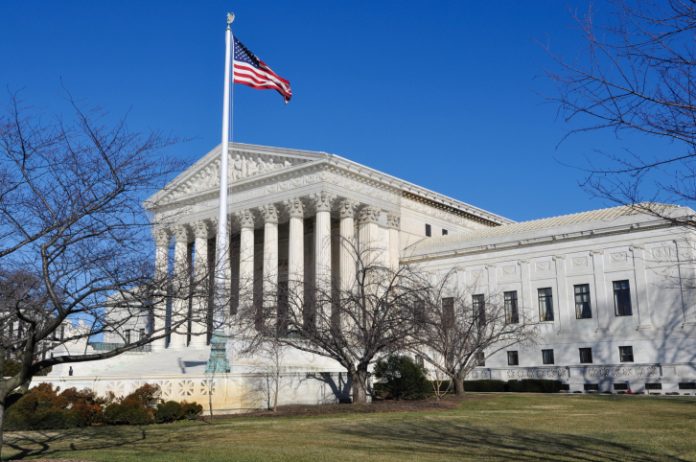Supreme Court overrules ‘Chevron Deference,’ stating “(federal) agencies have no special competence in resolving statutory ambiguities. Courts do.”
Commercial fishermen in New Jersey initiated the case, Loper Bright Enterprises vs. Raimondo. The fishermen argued that they were unjustly charged by the National Oceanic and Atmospheric Administration in 2020 to pay for third-party, onboard monitors of their operations.
The Daily Signal depends on the support of readers like you. Donate now
NOAA did this without Congress giving the agency authority to do so. The fishermen argued that the federal regulation violates Article 1 of the Constitution.
A majority of the Supreme Court agreed with the fishermen’s appeal.
The Supreme Court’s decision overturns so-called Chevron deference, a legal test that comes from a series of cases before the high court beginning with its unanimous 1984 decision in Chevron USA Inc. v. Natural Resources Defense Council.
The Chevron doctrine essentially meant that courts give deference to the expertise of the government’s administrative agencies in interpreting legislative statutes.
“Perhaps most fundamentally, Chevron’s presumption is misguided because agencies have no special competence in resolving statutory ambiguities. Courts do,” Chief Justice John Roberts wrote in his majority opinion.
Robert argued that the Chevron deference was ultimately unworkable under the Constitution.
“Chevron has proved to be fundamentally misguided,” Roberts wrote. “It reshaped judicial review of agency action without grappling with the [Administrative Procedures Act], the statute that lays out how such review works. And its flaws were apparent from the start, prompting the Court to revise its foundations and continually limit its application.”
Judicial originalists have argued that Chevron deference places too much unimpeded power in the hands of government agencies. The new ruling shifts more power back to courts and legislative bodies.
Heritage Foundation fellow Steve Bradbury wrote earlier this year that the Supreme Court’s unanimous Chevron decision 40 years ago was a reaction to overreach by lower courts.
“When it handed down its Chevron opinion in 1984, the Supreme Court was reacting with some exasperation to a persistent pattern of flawed judicial intervention by the lower courts, particularly the U.S. Court of Appeals for the D.C. Circuit, the court that hears the greatest volume of challenges to agency actions,” Bradbury wrote.
Those who argued in favor of Chevron deference say that the courts are ill-equipped to understand technical policies promulgated by government agencies and therefore should defer to bureaucratic expertise.
Justice Elena Kagan wrote that Chevron deference, “has formed the backdrop against which Congress, courts, and agencies–as well as regulated parties and the public–all have operated for decades. It has been applied in thousands of judicial decisions. It has become part of the warp and woof of modern government, supporting regulatory efforts of all kinds.”
This is a breaking news story and may be updated.
Originally published by The Daily Signal. Republished with permission.
For more Rights, Justice, and Culture News.






